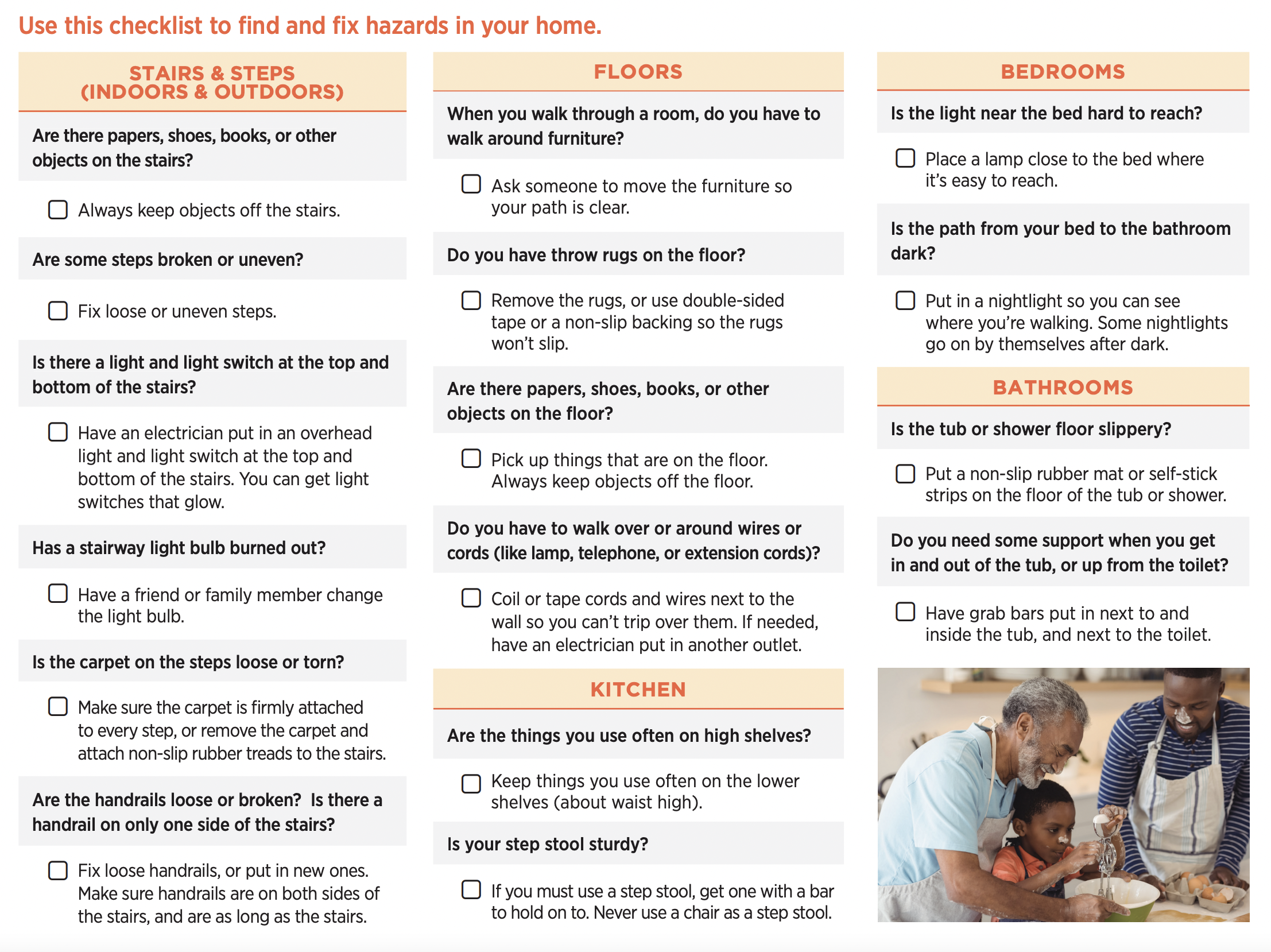All About Dementia Fall Risk
All About Dementia Fall Risk
Blog Article
What Does Dementia Fall Risk Do?
Table of ContentsThe Best Strategy To Use For Dementia Fall RiskThe Best Guide To Dementia Fall RiskIndicators on Dementia Fall Risk You Should KnowAn Unbiased View of Dementia Fall Risk
A fall risk analysis checks to see just how most likely it is that you will certainly drop. The assessment normally includes: This consists of a collection of questions about your general health and wellness and if you have actually had previous drops or problems with equilibrium, standing, and/or strolling.Treatments are referrals that might reduce your risk of dropping. STEADI includes 3 steps: you for your risk of dropping for your danger elements that can be boosted to try to avoid drops (for example, equilibrium issues, damaged vision) to minimize your risk of dropping by using reliable techniques (for example, supplying education and resources), you may be asked numerous concerns consisting of: Have you fallen in the previous year? Are you worried concerning falling?
If it takes you 12 secs or more, it may indicate you are at higher risk for a loss. This examination checks strength and balance.
Relocate one foot midway ahead, so the instep is touching the large toe of your various other foot. Relocate one foot fully in front of the other, so the toes are touching the heel of your various other foot.
What Does Dementia Fall Risk Do?
A lot of drops happen as an outcome of several contributing variables; as a result, managing the threat of falling starts with identifying the aspects that add to fall risk - Dementia Fall Risk. A few of one of the most appropriate danger factors include: Background of prior fallsChronic medical conditionsAcute illnessImpaired stride and equilibrium, reduced extremity weaknessCognitive impairmentChanges in visionCertain high-risk drugs and polypharmacyEnvironmental elements can likewise boost the threat for falls, including: Poor lightingUneven or damaged flooringWet or slippery floorsMissing or damaged handrails and order barsDamaged or improperly fitted tools, such as beds, mobility devices, or walkersImproper use assistive devicesInadequate supervision of the individuals living in the NF, including those who show hostile behaviorsA effective fall danger monitoring program calls for a complete clinical evaluation, with input from all members of the interdisciplinary team

The care strategy must likewise include interventions that are system-based, such as those that promote a risk-free atmosphere (appropriate lighting, hand rails, get hold of bars, etc). The effectiveness of the interventions need to be reviewed periodically, and the treatment plan revised as necessary to mirror changes in the fall danger evaluation. Carrying out an autumn danger management system utilizing evidence-based ideal technique can minimize the prevalence of falls in the NF, while limiting the possibility for fall-related injuries.
8 Simple Techniques For Dementia Fall Risk
The AGS/BGS guideline suggests evaluating all grownups aged her latest blog 65 years and older for autumn threat yearly. This testing is composed of asking individuals whether they have visit their website actually dropped 2 or more times in the past year or sought clinical focus for a fall, or, if they have not dropped, whether they really feel unstable when strolling.
People who have actually fallen once without injury must have their equilibrium and stride assessed; those with stride or equilibrium problems should get extra evaluation. A background of 1 loss without injury and without stride or equilibrium problems does not warrant additional evaluation beyond continued annual autumn danger testing. Dementia Fall Risk. A loss threat analysis is called for as component of the Welcome to Medicare examination
-copy-5.jpg)
Some Known Details About Dementia Fall Risk
Recording a falls background is one of the top quality indicators for autumn avoidance and management. Psychoactive medicines in particular are click for more independent forecasters of drops.
Postural hypotension can usually be reduced by lowering the dosage of blood pressurelowering medicines and/or quiting medicines that have orthostatic hypotension as an adverse effects. Use of above-the-knee support pipe and sleeping with the head of the bed boosted might also reduce postural decreases in blood stress. The advisable elements of a fall-focused physical assessment are revealed in Box 1.

A pull time more than or equal to 12 seconds recommends high fall threat. The 30-Second Chair Stand test examines reduced extremity strength and balance. Being incapable to stand up from a chair of knee height without making use of one's arms shows enhanced autumn risk. The 4-Stage Balance examination assesses static equilibrium by having the client stand in 4 placements, each gradually a lot more challenging.
Report this page